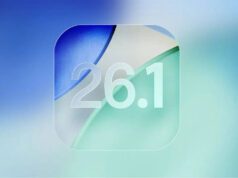The digital walls between Apple’s iPhone and iPad ecosystems are crumbling, thanks to a clever exploit targeting iOS 26.1. Hackers are now running iPadOS features, like Stage Manager, on the iPhone 17 Pro Max, blurring the lines between Apple’s mobile devices and reigniting the spirit of the jailbreaking community. This isn’t just about bragging rights; it’s a glimpse into a world where users dictate device capabilities, not Cupertino.
Videos showcasing the modded iPhones have gone viral, demonstrating iPad-style multitasking, floating windows, and the coveted iPadOS dock. This newfound flexibility is made possible by manipulating a protected system file called MobileGestalt, a technique that was once the exclusive domain of complex jailbreaks.
The key to this exploit lies in a maliciously crafted `downloads.28.sqlitedb` file. This file allows users to write to normally protected system paths, including the all-important `MobileGestalt.plist` file. For years, the MobileGestalt file has been a whispered legend in jailbreaking circles, acting as the gatekeeper for device identity and feature enablement.
Normally, editing this file would require a full jailbreak, a process that has become increasingly difficult with Apple’s tightened security measures. However, this new exploit bypasses those restrictions, offering unprecedented control over the iPhone’s capabilities. According to developer Duy Tran, the exploit was active up to iOS 26.1 beta and has since been patched in 26.2 beta 2, creating a small window for experimentation.
What is MobileGestalt?
Think of MobileGestalt as the iPhone’s DNA. It contains information about the device’s identity and capabilities, which iOS uses to determine which features should be enabled. Jailbreakers have long sought to manipulate this file to unlock features restricted to certain models or bypass limitations imposed by Apple.
Duy Tran explained that the exploit allowed users to “edit mobilegestalt bypass icloud,” highlighting the potential for significant system-level modifications.
One user claimed to have enabled iPhone 15 Plus battery limit features on an older iPhone 14 using a tool called misakaX. Another, however, warned, “I accidentally applied my iPad’s Gestalt file to my iPhone, and lets just say dont try it yourself!”
Even Broque Ramdisk, a tool for backing up activation files, relies on the MobileGestalt file. One user saying , “Broque Ramdisk saved the activation files as 1, 2, 3, 4,” illustrates the file’s critical role in device functionality.
The discovery of this exploit has injected a surge of excitement into the iOS modding community, a scene that has been relatively quiet since Apple significantly tightened security with iOS 18 and beyond. While many users now prefer the stability and security of official Apple updates, the allure of unlocking hidden features remains strong.
This MobileGestalt-based exploit opens the door to a range of possibilities:
- Enabling iPad apps on iPhones
- Activating Stage Manager for enhanced multitasking
- Enabling Apple Pencil modes on unsupported devices
- Potentially forcing Apple Intelligence features
- Modifying device capability flags for customized experiences
- Experimenting with Medusa-based split-screen modes
However, the potential rewards come with significant risks. Applying the wrong MobileGestalt file can lead to a soft brick or even a hard brick, rendering the device unusable. Incorrect patching can trigger bootloops, trapping the device in a perpetual restart cycle. The fact that Apple has already patched the exploit in iOS 26.2 beta 2 underscores the fleeting nature of this opportunity.
As with any iOS exploit, this is a fascinating development, but one that demands caution. While the temptation to push the boundaries of device customization is strong, users must be aware of the potential consequences. The line between innovation and disaster can be razor thin.
The ability to run iPadOS features on an iPhone is a tantalizing glimpse into a future where device limitations are less rigid. Whether Apple will embrace this spirit of customization or continue to reinforce the walls between its ecosystems remains to be seen. For now, the modding community has a new playground, albeit a potentially dangerous one.





